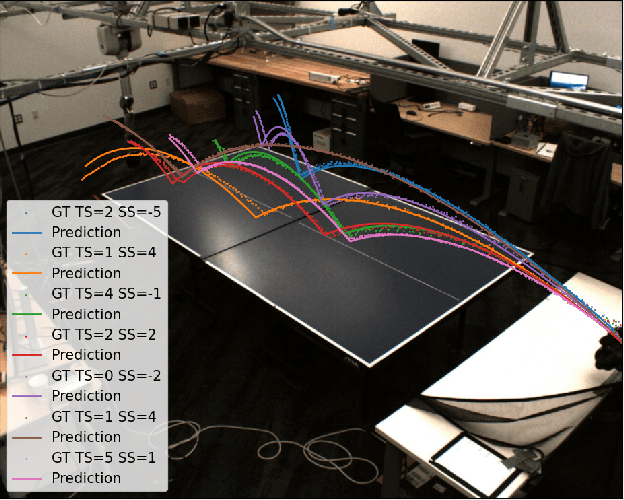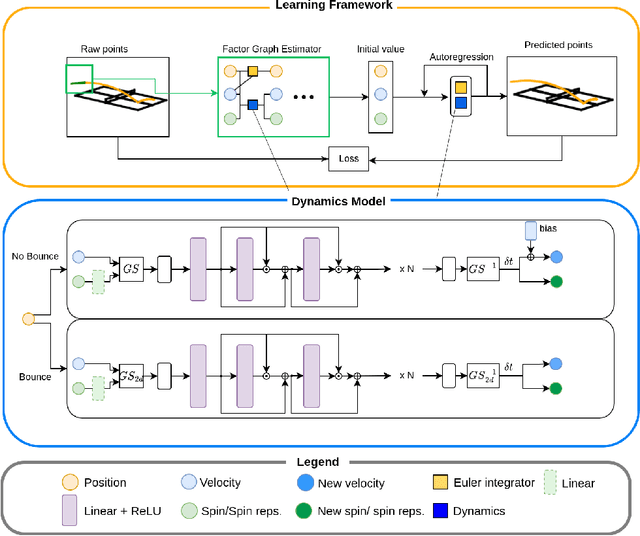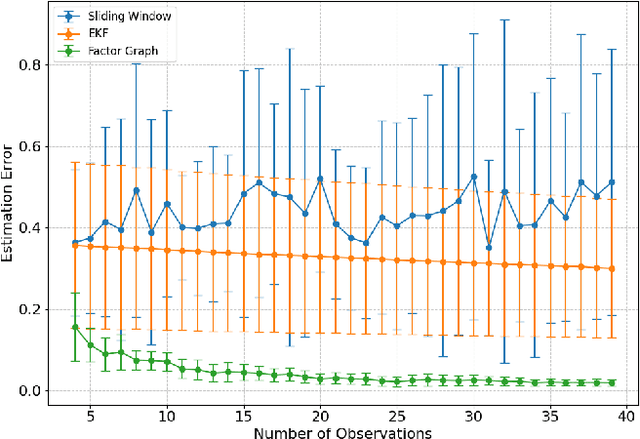Matthew Gombolay
Proceedings of 1st Workshop on Advancing Artificial Intelligence through Theory of Mind
Apr 28, 2025Abstract:This volume includes a selection of papers presented at the Workshop on Advancing Artificial Intelligence through Theory of Mind held at AAAI 2025 in Philadelphia US on 3rd March 2025. The purpose of this volume is to provide an open access and curated anthology for the ToM and AI research community.
Model-Agnostic Policy Explanations with Large Language Models
Apr 08, 2025Abstract:Intelligent agents, such as robots, are increasingly deployed in real-world, human-centric environments. To foster appropriate human trust and meet legal and ethical standards, these agents must be able to explain their behavior. However, state-of-the-art agents are typically driven by black-box models like deep neural networks, limiting their interpretability. We propose a method for generating natural language explanations of agent behavior based only on observed states and actions -- without access to the agent's underlying model. Our approach learns a locally interpretable surrogate model of the agent's behavior from observations, which then guides a large language model to generate plausible explanations with minimal hallucination. Empirical results show that our method produces explanations that are more comprehensible and correct than those from baselines, as judged by both language models and human evaluators. Furthermore, we find that participants in a user study more accurately predicted the agent's future actions when given our explanations, suggesting improved understanding of agent behavior.
Towards Automated Semantic Interpretability in Reinforcement Learning via Vision-Language Models
Mar 20, 2025Abstract:Semantic Interpretability in Reinforcement Learning (RL) enables transparency, accountability, and safer deployment by making the agent's decisions understandable and verifiable. Achieving this, however, requires a feature space composed of human-understandable concepts, which traditionally rely on human specification and fail to generalize to unseen environments. In this work, we introduce Semantically Interpretable Reinforcement Learning with Vision-Language Models Empowered Automation (SILVA), an automated framework that leverages pre-trained vision-language models (VLM) for semantic feature extraction and interpretable tree-based models for policy optimization. SILVA first queries a VLM to identify relevant semantic features for an unseen environment, then extracts these features from the environment. Finally, it trains an Interpretable Control Tree via RL, mapping the extracted features to actions in a transparent and interpretable manner. To address the computational inefficiency of extracting features directly with VLMs, we develop a feature extraction pipeline that generates a dataset for training a lightweight convolutional network, which is subsequently used during RL. By leveraging VLMs to automate tree-based RL, SILVA removes the reliance on human annotation previously required by interpretable models while also overcoming the inability of VLMs alone to generate valid robot policies, enabling semantically interpretable reinforcement learning without human-in-the-loop.
Bi-Directional Mental Model Reconciliation for Human-Robot Interaction with Large Language Models
Mar 10, 2025Abstract:In human-robot interactions, human and robot agents maintain internal mental models of their environment, their shared task, and each other. The accuracy of these representations depends on each agent's ability to perform theory of mind, i.e. to understand the knowledge, preferences, and intentions of their teammate. When mental models diverge to the extent that it affects task execution, reconciliation becomes necessary to prevent the degradation of interaction. We propose a framework for bi-directional mental model reconciliation, leveraging large language models to facilitate alignment through semi-structured natural language dialogue. Our framework relaxes the assumption of prior model reconciliation work that either the human or robot agent begins with a correct model for the other agent to align to. Through our framework, both humans and robots are able to identify and communicate missing task-relevant context during interaction, iteratively progressing toward a shared mental model.
Towards Learning Scalable Agile Dynamic Motion Planning for Robosoccer Teams with Policy Optimization
Feb 08, 2025Abstract:In fast-paced, ever-changing environments, dynamic Motion Planning for Multi-Agent Systems in the presence of obstacles is a universal and unsolved problem. Be it from path planning around obstacles to the movement of robotic arms, or in planning navigation of robot teams in settings such as Robosoccer, dynamic motion planning is needed to avoid collisions while reaching the targeted destination when multiple agents occupy the same area. In continuous domains where the world changes quickly, existing classical Motion Planning algorithms such as RRT* and A* become computationally expensive to rerun at every time step. Many variations of classical and well-formulated non-learning path-planning methods have been proposed to solve this universal problem but fall short due to their limitations of speed, smoothness, optimally, etc. Deep Learning models overcome their challenges due to their ability to adapt to varying environments based on past experience. However, current learning motion planning models use discretized environments, do not account for heterogeneous agents or replanning, and build up to improve the classical motion planners' efficiency, leading to issues with scalability. To prevent collisions between heterogenous team members and collision to obstacles while trying to reach the target location, we present a learning-based dynamic navigation model and show our model working on a simple environment in the concept of a simple Robosoccer Game.
Asynchronous Training of Mixed-Role Human Actors in a Partially-Observable Environment
Dec 23, 2024Abstract:In cooperative training, humans within a team coordinate on complex tasks, building mental models of their teammates and learning to adapt to teammates' actions in real-time. To reduce the often prohibitive scheduling constraints associated with cooperative training, this article introduces a paradigm for cooperative asynchronous training of human teams in which trainees practice coordination with autonomous teammates rather than humans. We introduce a novel experimental design for evaluating autonomous teammates for use as training partners in cooperative training. We apply the design to a human-subjects experiment where humans are trained with either another human or an autonomous teammate and are evaluated with a new human subject in a new, partially observable, cooperative game developed for this study. Importantly, we employ a method to cluster teammate trajectories from demonstrations performed in the experiment to form a smaller number of training conditions. This results in a simpler experiment design that enabled us to conduct a complex cooperative training human-subjects study in a reasonable amount of time. Through a demonstration of the proposed experimental design, we provide takeaways and design recommendations for future research in the development of cooperative asynchronous training systems utilizing robot surrogates for human teammates.
ELEMENTAL: Interactive Learning from Demonstrations and Vision-Language Models for Reward Design in Robotics
Nov 27, 2024Abstract:Reinforcement learning (RL) has demonstrated compelling performance in robotic tasks, but its success often hinges on the design of complex, ad hoc reward functions. Researchers have explored how Large Language Models (LLMs) could enable non-expert users to specify reward functions more easily. However, LLMs struggle to balance the importance of different features, generalize poorly to out-of-distribution robotic tasks, and cannot represent the problem properly with only text-based descriptions. To address these challenges, we propose ELEMENTAL (intEractive LEarning froM dEmoNstraTion And Language), a novel framework that combines natural language guidance with visual user demonstrations to align robot behavior with user intentions better. By incorporating visual inputs, ELEMENTAL overcomes the limitations of text-only task specifications, while leveraging inverse reinforcement learning (IRL) to balance feature weights and match the demonstrated behaviors optimally. ELEMENTAL also introduces an iterative feedback-loop through self-reflection to improve feature, reward, and policy learning. Our experiment results demonstrate that ELEMENTAL outperforms prior work by 42.3% on task success, and achieves 41.3% better generalization in out-of-distribution tasks, highlighting its robustness in LfD.
Generating CAD Code with Vision-Language Models for 3D Designs
Oct 07, 2024



Abstract:Generative AI has transformed the fields of Design and Manufacturing by providing efficient and automated methods for generating and modifying 3D objects. One approach involves using Large Language Models (LLMs) to generate Computer- Aided Design (CAD) scripting code, which can then be executed to render a 3D object; however, the resulting 3D object may not meet the specified requirements. Testing the correctness of CAD generated code is challenging due to the complexity and structure of 3D objects (e.g., shapes, surfaces, and dimensions) that are not feasible in code. In this paper, we introduce CADCodeVerify, a novel approach to iteratively verify and improve 3D objects generated from CAD code. Our approach works by producing ameliorative feedback by prompting a Vision-Language Model (VLM) to generate and answer a set of validation questions to verify the generated object and prompt the VLM to correct deviations. To evaluate CADCodeVerify, we introduce, CADPrompt, the first benchmark for CAD code generation, consisting of 200 natural language prompts paired with expert-annotated scripting code for 3D objects to benchmark progress. Our findings show that CADCodeVerify improves VLM performance by providing visual feedback, enhancing the structure of the 3D objects, and increasing the success rate of the compiled program. When applied to GPT-4, CADCodeVerify achieved a 7.30% reduction in Point Cloud distance and a 5.0% improvement in success rate compared to prior work
Learning Wheelchair Tennis Navigation from Broadcast Videos with Domain Knowledge Transfer and Diffusion Motion Planning
Sep 29, 2024



Abstract:In this paper, we propose a novel and generalizable zero-shot knowledge transfer framework that distills expert sports navigation strategies from web videos into robotic systems with adversarial constraints and out-of-distribution image trajectories. Our pipeline enables diffusion-based imitation learning by reconstructing the full 3D task space from multiple partial views, warping it into 2D image space, closing the planning loop within this 2D space, and transfer constrained motion of interest back to task space. Additionally, we demonstrate that the learned policy can serve as a local planner in conjunction with position control. We apply this framework in the wheelchair tennis navigation problem to guide the wheelchair into the ball-hitting region. Our pipeline achieves a navigation success rate of 97.67% in reaching real-world recorded tennis ball trajectories with a physical robot wheelchair, and achieve a success rate of 68.49% in a real-world, real-time experiment on a full-sized tennis court.
Learning Dynamics of a Ball with Differentiable Factor Graph and Roto-Translational Invariant Representations
Sep 24, 2024



Abstract:Robots in dynamic environments need fast, accurate models of how objects move in their environments to support agile planning. In sports such as ping pong, analytical models often struggle to accurately predict ball trajectories with spins due to complex aerodynamics, elastic behaviors, and the challenges of modeling sliding and rolling friction. On the other hand, despite the promise of data-driven methods, machine learning struggles to make accurate, consistent predictions without precise input. In this paper, we propose an end-to-end learning framework that can jointly train a dynamics model and a factor graph estimator. Our approach leverages a Gram-Schmidt (GS) process to extract roto-translational invariant representations to improve the model performance, which can further reduce the validation error compared to data augmentation method. Additionally, we propose a network architecture that enhances nonlinearity by using self-multiplicative bypasses in the layer connections. By leveraging these novel methods, our proposed approach predicts the ball's position with an RMSE of 37.2 mm of the paddle radius at the apex after the first bounce, and 71.5 mm after the second bounce.
 Add to Chrome
Add to Chrome Add to Firefox
Add to Firefox Add to Edge
Add to Edge